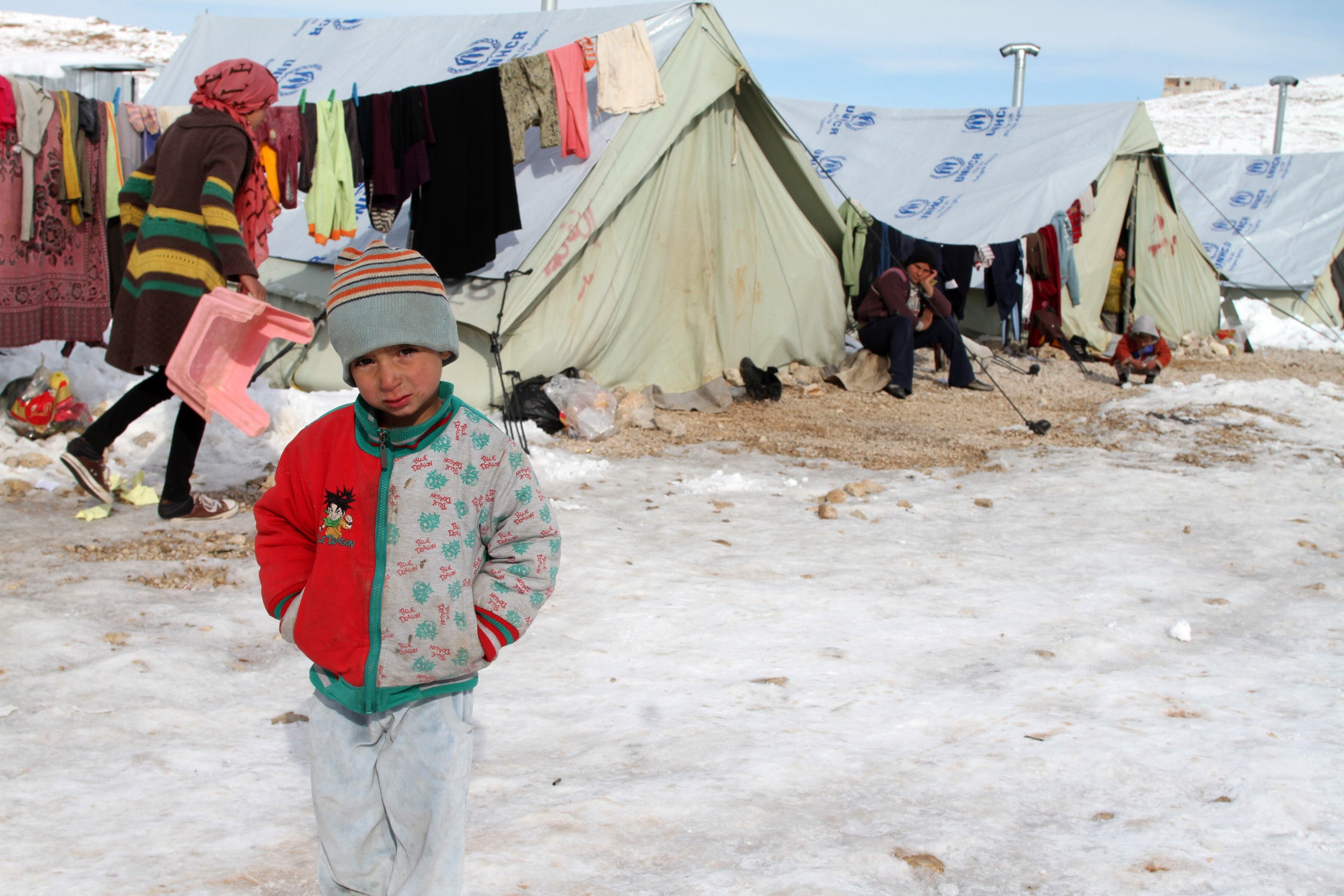Ninety percent of Syrian refugees in Lebanon now live under the extreme poverty line, the United Nations has said, after an economic collapse in the country and the pandemic pushed hundreds of thousands to the brink.
That is nearly double the extreme poverty rate the UN recorded last year, meaning they live on just a few dollars a day.
In 2020 the UN said a staggering 90 percent of the estimated 1.5 million Syrian refugees now living in the country live on less than 308,728 Lebanese Lira per person per month.
That is just $200 (£150) on the official exchange rate but just $37 (£27) on this week’s black-market rate, which is considered the more accurate measure as Lebanon’s currency has tumbled in value.
Half the Syrian families surveyed were also found to be suffering from food insecurity, up from a third last year, after a sharp rise in inflation caused food prices to triple.
In the squalid camps where many Syrian refugee families live, social distancing in the pandemic has been near impossible.
The lockdowns and financial collapse have meant that the little work there was has dried up, pushing families to the very edge.
Ahmad Seifeddine, a Syrian refugee in a camp in Arsal, near the border with Syria, said he relies on food handouts to survive.
He sent The Independent a video of the tent he lives in which is fashioned out of plastic sheeting propped up with broken bits of wood.
“It is a disaster, the UN reduced the number of families registered for assistance so we wouldn’t eat if we weren’t able to get our food and cooking gas from charities,” he told The Independent.
“This is the worst year for us and of course the Lebanese people who are struggling to survive themselves. We have no idea how we will get through this winter.”
Mireille Girard, UNHCR Representative in Lebanon, said that while the entire country was suffering in the unprecedented economic crisis, Syrian refugees were among the most vulnerable and hardest hit.
“The situation of Syrian refugees in Lebanon has been deteriorating for years, but the findings of this year’s survey are a dramatic indication of how difficult it has become for them to make it through another day,” she said.
“The key findings are released at a time when Syrian refugees are facing their hardest winter yet in Lebanon, braving the weather elements with very little to stay warm and safe,” she added.
Lebanon has the largest number of refugees per capita in the world: according to the UN, one in four people is a refugee.
Among those are an estimated 1.5 million Syrians, 40 percent of whom are not registered with the UN and so are not eligible for cash assistance, food parcels or, until recently, help with medical care.
There are an additional UN-registered 470,000 Palestinian refugees in Lebanon, including 30,000 who have fled from Syria since the start of the civil war.
The situation of Syrian refugees in Lebanon has been deteriorating for years, but the findings of this year’s survey are a dramatic indication of how difficult it has become for them to make it through another day,
All refugees face work permits and healthcare restrictions making them vulnerable in the economic collapse and pandemic.
Khaled Sultan, another Syrian refugee, told The Independent that the pandemic had devastated communities as it removed the small amount of income they might be able to make.
“Families are barely surviving,” he added.
The UN said on Friday that the situation was so dire most refugee families now borrowed money for nearly all their food and at least half the cost of their medicines. In fact nine out of ten households are now mired by debt.
Amid the economic hardships and school closures in the pandemic, the UN’s child agency meanwhile registered 4.4 per cent of children aged between 5 and 17 are now engaged in child labour, which is double the percentage logged in 2019.
“We need to ensure that the most vulnerable children and young people are kept healthy, safe, and learning,” said Yukie Mokuo, UNICEF’s representative in Lebanon.
“They should be kept away from negative coping mechanisms such as child labour,” she added.





Join our commenting forum
Join thought-provoking conversations, follow other Independent readers and see their replies
Comments